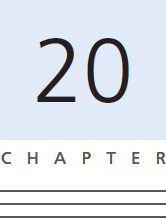
CYSTIC LESIONS
A neurysmal bone cyst (ABC) is a benign lesion of bone that accounts for about 2% of all bone tumors. It can be primary, occurring de novo as an isolated lesion or in association with another lesion of bone where it is termed secondary ABC. Secondary ABC occurs most commonly in association with other benign tumors of bone, particularly giant cell tumor, chondromyxoid fibroma, osteoblastoma, and chondroblastoma.
Most patients are young, with a peak incidence in adolescents and a mean age of 13 years. ABC is relatively uncommon in very young patients (under 5), but can be seen sporadically throughout adulthood. ABC can occur in any bone, but has a predilection for the metaphyses of the long bones. The distal femur, proximal tibia, and proximal humerus account for the most common sites. It also occurs with some frequency in the posterior elements of the vertebral bodies where it can cause neurologic symptoms or spinal cord compression.
In the more common sites such as the knee, presenting symptoms of ABC include local pain and swelling. On imaging, these tumors are usually eccentrically located near the metaphysis and have an expansile and lytic appearance, often termed “blow-out” lesions (Figure 20.1.1). They often have a thin peripheral shell of subperiosteal bone that imparts an “eggshell” appearance. Fluid-fluid levels, created by different densities of the multiple cystic cavities, are another characteristic finding on both plain films and cross-sectional imaging (Figure 20.1.2). In the spine, ABC can involve adjacent vertebrae, conveying a disturbing, often aggressive appearance.
Primary ABCs show recurrent translocations t(16;17)(q22;p13), which fuse the osteoblast cadherin 11 gene (CDH11) to the ubiquitin protease USP6 gene. This cytogenetic feature is identified in the majority of stand-alone (primary) ABCs, but is often not present in secondary ABCs that accompany other bone tumors.
HISTOPATHOLOGY
ABCs are infrequently removed as intact lesions. More commonly, they are subjected to curettage. The resulting histologic specimen is composed of collapsed cyst walls and blood, often imparting a spongy appearance. When viewed under the microscope, ABC comprises large cavernous spaces filled with blood that are separated by numerous fibrous septae composed of fibrous tissue, fibrin, inflammatory cells, and occasional multinucleate giant cells (Figure 20.1.3). There may be interspersed areas with a more “solid” appearance composed of loose connective tissue and immature osteoid. The osteoid is often deposited in a linear arrangement, which tends to parallel the contours of the collapsed septae. The osteoid of ABC is usually immature and accompanied by plump osteoblasts (Figure 20.1.4). Occasionally it can take on a heavy deposition of calcium imparting a “blue bone” appearance (Figure 20.1.5). Mitoses are often identified, but atypical mitotic figures are absent. If significant nuclear atypia is present, an alternative diagnosis, particularly the telangiectatic variant of osteosarcoma, should be suspected. The latter is the main differential diagnosis of ABC and can show significant overlap in histologic and imaging features.
Occasionally there are “solid” foci within an ABC. These are composed of spindled cells in a loose background with occasional foci of irregular osteoid. These foci are easily mistaken for malignancy, and care should be taken not to overinterpret this finding as evidence of an osteosarcoma. This is particularly easy to do on frozen sections where cellular atypia often appears worse than it would on fixed materials. This represents a known pitfall in the diagnosis of bone lesions. To avoid such a mistake, it is helpful to have some knowledge of the imaging features of the lesion. When in doubt, one can defer a final diagnosis until permanent sections are available for careful review.
CYTOLOGIC FINDINGS
Stay updated, free articles. Join our Telegram channel

Full access? Get Clinical Tree


